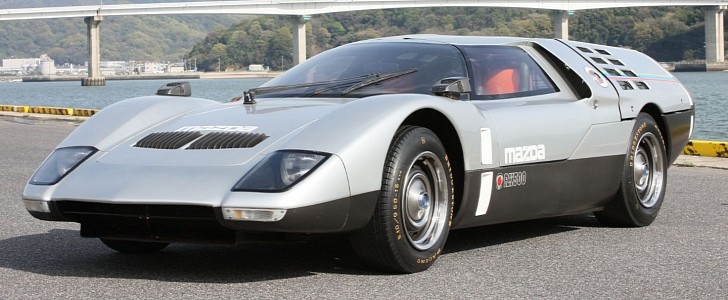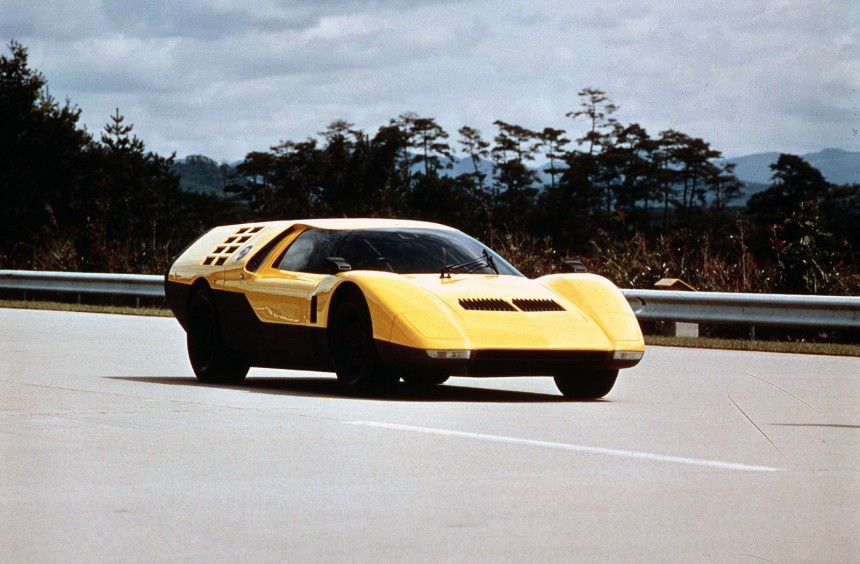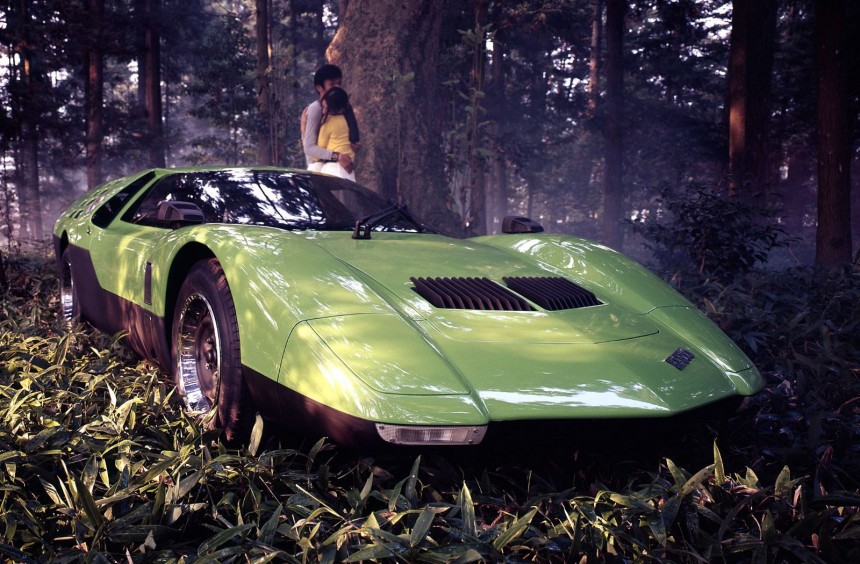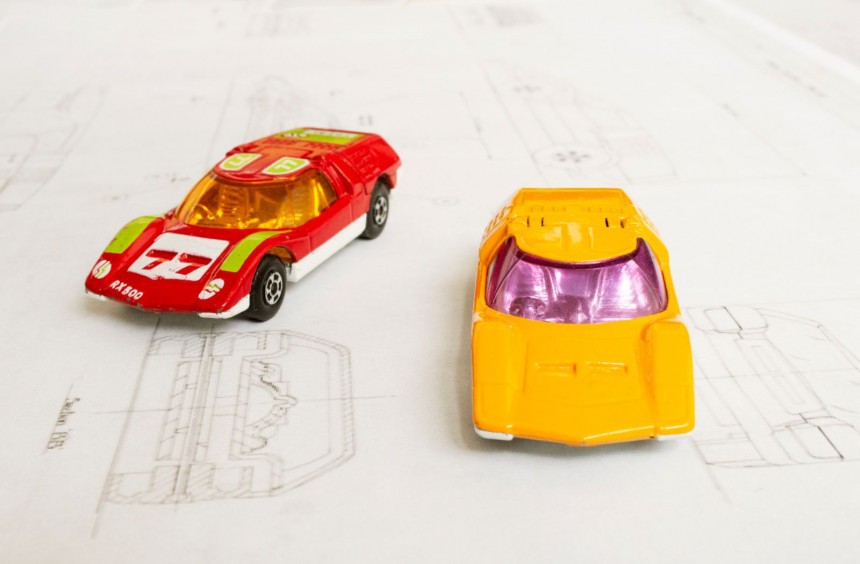With a design that seems to combine a classic supercar with a spaceship, the RX500 is one of Mazda's most innovative cars ever built. Although it never made it into series production, the rotary-powered concept inspired one of the best-selling Matchbox models of the 1970s. It continues to captivate the minds of car enthusiasts all over the world even today, more than half of century since its initial release.
The story of the RX500 starts in the late 1960s when Mazda was toying with the idea of creating a mid-engine sports car that could rival the likes of Ferrari, Lamborghini, or Maserati.
Five employees, including designer Shigenori Fukuda, volunteered to work on the project after their normal working hours. After countless hours of studying aerodynamics and drawing up sketches, five individual models were submitted. Among them was Fukuda’s wagon-like coupe which stood out because it had the lowest drag coefficient and was ultimately chosen as the go-to design.
A detailed clay model was presented in January 1969, and a decision was made to build a fully functioning prototype for the upcoming 50th anniversary of Mazda’s founding as Toyo Cork Kogyo Co., Ltd. Almost two years later, at the Tokyo Motor Show, the spectacular RX500 was unveiled, instantly becoming a crowd-favorite at the event that showcased many innovative concepts such as the Toyota EX 7, Nissan 270X, and 126X, or the Isuzu Bellett 1600MX.
Compared to Mazda’s production models at the time, it looked fundamentally different. The front resembled a Lamborghini Miura, while the peculiar rear end seemed to be inspired by a spaceship.
It featured red, yellow, and green taillights that indicated whether the car was speeding up, cruising, or slowing down by changing color. Fukuda later admitted that he drew inspiration for this design from Stanley Kubrick’s 1968 blockbuster "2001: A Space Odyssey."
Its composite bodywork was initially painted lime green, but it was repainted yellow before the official reveal to match all the other Mazdas showcased at the event.
The futuristic supercar had many other innovative features like the air intakes placed under the side mirrors that channeled fresh air into the cabin. The butterfly swing doors were also impressive, as were the two gullwing opening engine covers that hid a tiny 1.0 L (982 cc) powerplant capable of revving up to 15,000 rpm, which was higher than most race cars of the era. The twin-rotor 10A made 247 hp (184 kW; 250 PS), and since the car weighed just 1,874 lbs (850 kg), its power-to-weight ratio stood at 7.5 lbs (3.4 kg) per horsepower.
During the following months, the RX500 generated strong media coverage worldwide, which prompted British toy car manufacturers Matchbox to include it in its Superfast series, a new line introduced as a response to Mattel’s Hot Wheels that debuted in 1968.
Released in 1971 as the MB66, the model was painted yellow just like its life-size counterpart and recreated many of its features, such as the multitude of vents or the wrap-around windshield. The engine cover also opened up but it doesn't employ the gullwing system because of manufacturing constraints.
The toy car immediately became an instant hit worldwide, getting a red Streaker makeover in 1975. It was discontinued a year later and became available once again in several local markets between 1978 and 1985.
The real-life prototype never made it into series production, partially because of the 1973 oil crisis. It toured select dealerships around the world, sustaining some minor damage in the process and being repainted yet again, this time in silver. Eventually, it received a thorough restoration and can be currently admired in pristine shape at the Numaji Transportation Museum in Hiroshima.
Fans of the car who don’t have the means to travel to Japan can purchase an original 1:59 scale Matchbox model from the 1970s in a near-perfect state for as little as $45 on websites such as eBay.
Five employees, including designer Shigenori Fukuda, volunteered to work on the project after their normal working hours. After countless hours of studying aerodynamics and drawing up sketches, five individual models were submitted. Among them was Fukuda’s wagon-like coupe which stood out because it had the lowest drag coefficient and was ultimately chosen as the go-to design.
A detailed clay model was presented in January 1969, and a decision was made to build a fully functioning prototype for the upcoming 50th anniversary of Mazda’s founding as Toyo Cork Kogyo Co., Ltd. Almost two years later, at the Tokyo Motor Show, the spectacular RX500 was unveiled, instantly becoming a crowd-favorite at the event that showcased many innovative concepts such as the Toyota EX 7, Nissan 270X, and 126X, or the Isuzu Bellett 1600MX.
It featured red, yellow, and green taillights that indicated whether the car was speeding up, cruising, or slowing down by changing color. Fukuda later admitted that he drew inspiration for this design from Stanley Kubrick’s 1968 blockbuster "2001: A Space Odyssey."
Its composite bodywork was initially painted lime green, but it was repainted yellow before the official reveal to match all the other Mazdas showcased at the event.
During the following months, the RX500 generated strong media coverage worldwide, which prompted British toy car manufacturers Matchbox to include it in its Superfast series, a new line introduced as a response to Mattel’s Hot Wheels that debuted in 1968.
Released in 1971 as the MB66, the model was painted yellow just like its life-size counterpart and recreated many of its features, such as the multitude of vents or the wrap-around windshield. The engine cover also opened up but it doesn't employ the gullwing system because of manufacturing constraints.
The real-life prototype never made it into series production, partially because of the 1973 oil crisis. It toured select dealerships around the world, sustaining some minor damage in the process and being repainted yet again, this time in silver. Eventually, it received a thorough restoration and can be currently admired in pristine shape at the Numaji Transportation Museum in Hiroshima.
Fans of the car who don’t have the means to travel to Japan can purchase an original 1:59 scale Matchbox model from the 1970s in a near-perfect state for as little as $45 on websites such as eBay.


































